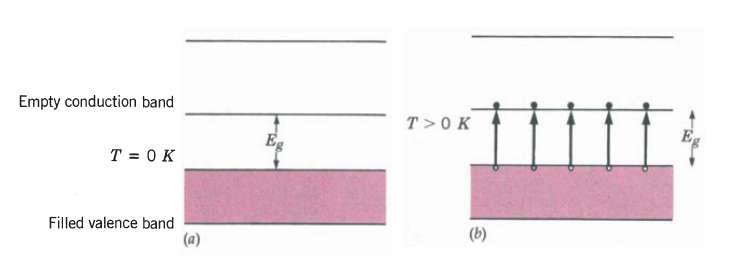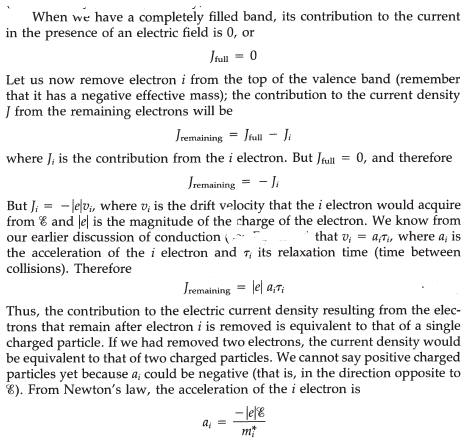Published by: BhumiRaj Timalsina
Published date: 26 Jun 2021

The concept that electrons near the top of the band have negative effective mass and undergo Bragg scattering leads to energy gap formation at the top of the band. this gives rise to the concept of holes.
At T = 0 K, the band structure of a semiconductor is characterized by a fully occupied valence band and a completely empty conduction band.
(a) At T = 0 K, the valence band of a semiconductor is filled with electrons and separated by an energy gap Eg from an empty conduction band. (b) At T > 0 K electrons are thermally excited into the conduction band, leaving behind in the valence band unoccupied energy states called holes, which behave as mobile positive charge carriers. fully occupied valence band and a completely empty conduction band. The semiconductor ideally is an insulator with zero conductivity at T = 0 K. As the temperature is raised, some electrons in the valence band can receive enough thermal energy and be excited into the conduction band because the energy gap between the two bands is rather narrow. The result is that there are some electrons in an otherwise empty conduction band and some unoccupied states in an otherwise filled valence band, An empty state in the valence band is called a hole.

The electrons in the conduction band can move under the influence of an external electric field because they have available to them many empty higher energy states, and they can contribute to the current density J. Similarly, the electrons in the valence band can move into the empty states (holes) left by the electrons that were excited into the conduction band. “the conduction by the electrons in the valence band as they move into the empty negative mass states is completely equivalent to the conduction by particles of positive charge and positive mass. The number of such +q, +m particles is equal to the number of available empty states, that is, the number of “holes.”


The acceleration ai is in the same direction as the electric field. We can therefore, say that the contribution to the current from the electrons that remain in the valence band when a certain number has been removed by thermal excitation or some other process is equivalent to that of the same number of positively charged holes with positive mass.
if additional energy is provided to the charge carriers of the semiconductor, such as by the application of an external electric field, the electrons in the valence band will move up into the empty states (the holes).